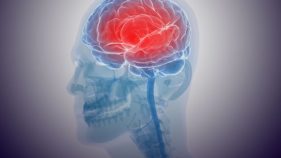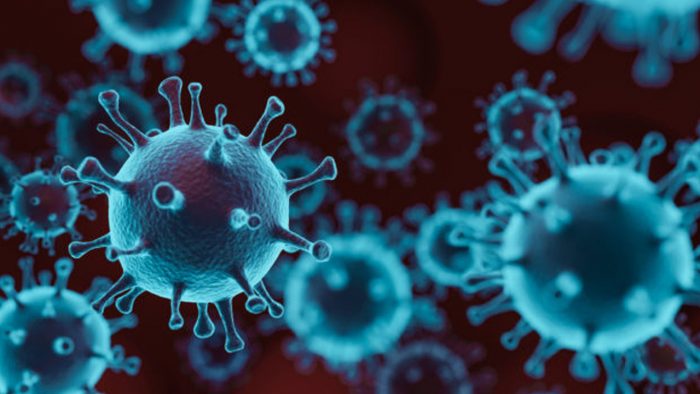As witnessed during the West African Ebola epidemic of 2014-16 and in today’s novel coronavirus (COVID-19) pandemic, disease outbreaks can spread rapidly, resulting in unprecedented social and economic costs and tragic loss of life.
In response to these health crises, new digital approaches to disease surveillance have emerged, aimed at speeding up the transfer of epidemiological data and increasing countries’ preparedness for future outbreaks.
Several studies have also shown that one effective and complementary strategy to slow the spread and reduce the impact of COVID-19 is to trace the primary and secondary contacts of confirmed cases using contact tracing technology.
According to the World Health Organisation (WHO), contact tracing is an essential public health measure and a critical component of comprehensive strategies to control the spread of COVID-19. Contact tracing breaks the chains of human-to-human transmission by identifying people exposed to confirmed cases, quarantining them, following up with them to ensure rapid isolation, and testing and treatment in case they develop symptoms.
When implemented systematically and effectively, these actions can ensure that the number of new cases generated by each confirmed case is maintained below one.
What is Nigeria using for contact tracing of COVID-19 patients? “Our Surveillance, Outbreak Response Management and Analysis System (SORMAS) platform for digital surveillance is also used for contact tracing. With this, we have an integrated system to keep track of new cases and also identify and follow up with their contacts,” Director General of the Nigeria Centre for Disease Control (NCDC), Dr. Chikwe Ihekweazu, told The Guardian.
Ihekweazu said this has been built as fit for purpose within Nigeria’s context, as the NCDC recognises the difficulty of limited Internet connectivity in some parts of the country. “With SORMAS, our health workers can continue their work with or without Internet access, and there is an automatic synchronisation as soon as they reach an area with Internet access,” the epidemiologist said.
He added: “Our goal is to adapt tools that can be used in our context, and build on these. We will continue to strengthen our use of SORMAS for case-based surveillance as well as for contact tracing.”
SORMAS software is an initiative of the Helmholtz Centre for Infection Research (HZI) in cooperation with the NCDC. SORMAS grew directly out of the experience of tackling Ebola in Nigeria. It is one of few programmes to provide comprehensive disease surveillance and outbreak management in a single digital platform, processing real-time data critical for tackling deadly disease outbreaks.
SORMAS was designed to improve the efficiency and timeliness of disease control measures. The entry of a suspected or confirmed case by a health worker at any level of the system automatically triggers a series of actions to ensure that it is managed quickly and efficiently. This system also allows different actors in the national surveillance and response system to receive and share new information which is immediately accessible to all those who need to see it.
Using this data, the platform is able to generate early warnings of potential outbreaks and activate response measures using real-time data to help manage and control the outbreak.
Elsewhere
The Go.Data software application, created by WHO with partners of the Global Outbreak Alert and Response Network, was designed specifically for field workers and has been implemented in many countries for COVID-19.
Proximity tracing tools, also known as proximity tracking tools, use location-based (GPS) or Bluetooth technology to find and trace the movements of individuals to identify people who may have been exposed to an infected person.
Many regions that have made contact tracing a key part of their COVID-19 playbook — including China, South Korea, Taiwan and Israel — have empowered contact tracers with sensitive details of infected people, including CCTV footage, credit-card transactions and location data from mobile-phone carriers. Australia was among the first countries to launch a national contact-tracing app. But in places where such solutions are likely to be incompatible with privacy expectations, Bluetooth tracing has proved alluring.
During the past two months, several research groups have developed privacy-minded protocols, including the TraceTogether team in Singapore, the Private Automated Contact Tracing (PACT) group led by researchers at the Massachusetts Institute of Technology (MIT) in Cambridge, and the largely European consortium Decentralized Privacy-Preserving Proximity Tracing (DP-3T).
These three teams have embraced a basic common concept. A smartphone regularly broadcasts a random string of characters that serves as a pseudonym to other phones using Bluetooth’s low-energy specification for sending short bursts of data.
The phone adopts a new string every 15 minutes or so to further anonymises the pseudonyms. At the same time, it logs every ‘chirp’ it hears from other phones, as well as information about the signal strength to estimate how close they are.
In the United States, US $500 million of the US $2 trillion economic stimulus bill recently signed into law has been allocated to the US Centers for Disease Control and Prevention to launch a new surveillance and data collection system to monitor the spread of COVID-19. This move is a first for the United States since stringent patient data privacy and security regulations have hampered the adoption of contact tracing as a countermeasure for epidemic control in the past.
Similarly, the state of Massachusetts has announced the launch of what it calls the “first contact tracing” call center with 1000 virtual assistants to call and trace contacts of COVID-19-positive persons.
In China, a mandatory smartphone app “Health code” that leverages a mesh network for infected persons contact tracing and notification.
In Italy, Germany, and Austria, telecommunications providers allow for the sharing of location data with health authorities to check whether people are remaining at home. The data is aggregated and anonymous, mapping concentrations rather than individuals to respect Europe’s privacy laws.
In South Korea, the government created a map of cell phone data provided by telecommunications and credit card companies. The map was made public, so everyone could track his or her level of exposure.
In Israel, the government is using GMS call detail records in addition to patient mobile phone position data to locate contacts and trace their movement patterns.
Iranian authorities developed a mobile app with government endorsement for COVID-19 self-diagnosis checks. It, however, also discretely collects user’s location data.
Singapore is using a mobile app that uses a Bluetooth-based mesh network to detect people’s proximity to those who have been exposed to COVID-19 and warns them to get tested if they come in close contact.
Challenges
However, there are concerns over the use of contact tracing apps in efforts to stop the spread of COVID-19.
A vaccinologist, virologist and Chief Executive of Innovative Vaccines Limited, Keffi, Nasarawa State, Dr. Simon Agwale, told The Guardian: “The NCDC is not using any App for contact tracing. They are still using the traditional method of tracing contacts of the index case using field officers.”
Singapore’s TraceTogether app was developed by the country’s health ministry and technology agency, and was released on March 20. Although groundbreaking, it exposed one glaring technical limitation to this general approach: because of the privacy measures imposed on Bluetooth function by Apple’s operating system, for the app to be useful, iPhones must remain unlocked all the time with the app open, a major inconvenience and a drain on the battery.
Indeed, as health departments weigh competing app designs and prepare their pitches to privacy-conscious citizens, they will have to define success. It will be hard to prove an app has slowed the rate of infections and changed the course of an epidemic. But teams of epidemiologists, engineers, and behavioral scientists have many ways to put them to the test.
Also, according to the WHO, although several countries and areas have deployed digital tools for their COVID-19 response, there is currently limited evidence to evaluate the effectiveness and impact of these tools. As such, digital tools should not be considered as ‘single solutions’ for contact tracing, but rather as complementary tools.
Additionally, the implementation of digital technologies in contact tracing carries the potential to do harm through privacy breaches, provision of incorrect medical advice based on self-reported symptoms, and the systematic exclusion of some members of society who cannot access such technologies. It is therefore important to have sufficient regulatory oversight of digital tools for contact tracing.
Ethical issues surrounding privacy, security, transparency and accountability also need to be considered throughout the design and implementation of digital tools for contact tracing.
Marginalised and disadvantaged groups will be more likely to be excluded, particularly in low-and middle-income settings. In humanitarian and conflict settings, mobile phones can present opportunities for theft and violence.
The timing of introduction of digital tools for contact tracing also needs careful consideration; ideally, the tool should be introduced during the preparedness phase in trainings. During response, refresher training can facilitate the timely launch of digital contact tracing.
Digital tools also incur developer costs, hardware and software costs, training costs, and require continuous user support.
Also, several digital contact data capture solutions; including the SORMAS require a field epidemiologist or their representative to visit every contact.
A recent study titled “COVID-19 Mobile Positioning Data Contact Tracing and Patient Privacy Regulations: Exploratory Search of Global Response Strategies and the Use of Digital Tools in Nigeria” concluded: “Mobile positioning data can significantly improve the capacity and scope of timely outbreak response and will help governments as well as other responders in Nigeria. When implemented early, there are opportunities to leverage positioning data to break the chains of disease transmission in community clusters. It can improve the efficiency of currently used field data collection and outbreak investigation platforms when used in synergy.
“While mobile positioning data can be used within the current regulation, guidelines for data handlers must include measures to curtail misuse and unauthorized access. Future research should design and implement models for mobile position contact tracing.”
The study was published in the journal JMIR Mhealth Uhealth.
The surveyed strategies for digital contact tracing for the COVID-19 pandemic and presented how using mobile positioning data conforms with Nigeria’s data privacy regulations.
The researchers conducted an exploratory review of current measures for COVID-19 contact tracing implemented around the world and analysed how countries are using mobile positioning data technology to reduce the spread of COVID-19. They made recommendations on how Nigeria can adopt this approach while adhering to the guidelines provided by the National Data Protection Regulation (NDPR).
The researchers said despite the potential of digital contact tracing, it always conflicts with patient data privacy regulations. “We found that Nigeria’s response complies with the NDPR, and that it is possible to leverage call detail records to complement current strategies within the NDPR,” they noted.
According to the WHO’s Ethical considerations to guide the use of digital proximity technologies for COVID-19 contact tracing (Interim Guidance), “Digital tools offer opportunities to strengthen contact tracing for COVID-19. Digital tools should be considered a way to augment and optimise contact tracing rather than a replacement of contact tracing teams. As such, it is necessary to have a clear understanding of the steps and requirements of the contact tracing process and clearly identify which are being optimised by digital tools.
“Integration of digital tools for contact tracing needs to carefully identify and address technical, cost, and ethical issues. WHO recommends that users of digital tools should participate on a voluntary basis and that written consent is always obtained. Privacy concerns about the disclosure of personal data need to always be addressed. Data processing agreements must disclose which data are transmitted to third parties and for what purpose.
“Further research is needed to assess the effectiveness of digital tools for contact tracing, and on the feasibility and thresholds required for implementation at scale. WHO encourages public health authorities to conduct evaluations of their digital tools for contact tracing to contribute to the global knowledge base about new technologies in public health. This should be further supported by the use of standard performance indicators through which different digital tools and approaches can be assessed.”
Going forward
The NCDC reported that it is currently conducting contact tracing of over 10,111 contacts of confirmed cases in an attempt to effectively contain the spread of the disease, in line with the recommended measures for pandemic response.
Although the NCDC’s approach has been commended for its compliance with WHO guidelines for large-scale containment and contact tracing, there remain options that may yet be explored. Given the inadequacy of testing kits, it is believed that the number of confirmed cases may be far lower than the actual number of cases in Nigeria and most African countries. This is fueling speculations of a real, catastrophic-level pandemic if isolation, containment, quarantine, and contact-tracing mechanisms are not urgently implemented. In a country with an already weak health care system occasioned by poor health investment choices, managing such an outbreak will become impossible.
There is, therefore, a need to develop and adopt new strategies, particularly digitally enabled strategies, to facilitate a more extensive, accurate, seamless, and timely response in line with the high frequency of new infections among contacts of confirmed cases (that is, the secondary infection rate).
The adoption of digital solutions in Nigeria has been focused on electronic forms for contact data collection and visualization for follow-up. Digital technologies can do more than be a tool for field data collection or serve as an outbreak investigation platform. Data on households and general population movement patterns can be extracted through digital technologies.
Farrahi et al showed that over a nine-month period, 72 participants made 10,992 phone calls and 9432 SMS records representing communication flow; additionally, these participants made 1,973,547 Bluetooth interactions representing physical proximity movements. When extrapolated for three cases in Abuja, the capital city of Nigeria, their movement can result in thousands of interactions. In the case of an infection, these three cases can initiate an exponential number of contacts through these interactions. The registered quarantine address can be visualized on the map and movement of quarantine subjects can be monitored with notifications enabled.
The GSM Association puts the total number of mobile subscribers at five billion unique subscribers and seven billion connected devices. Nigeria has 184 million active mobile subscriber lines. Mobile telecommunications subscriber communication and movement data was used for contact tracing during the Ebola outbreak.
Many countries are currently using mobile data for a more rapid response to the COVID-19 pandemic. There has been a 90 per cent increase in the number of countries implementing digital tracking measures and a 100 per cent increase in reports of censorship. These approaches range from the use of anonymised aggregate data to monitor the general mobility of people and track the mobile phones of confirmed cases to tracking suspected patients and their contacts. In some cases, these approaches were individualised and mandatory while, in others, they were aggregated and anonymised. In all cases, there were collaborations between the government, mobile network operators (MNOs), and other data controllers such as technology companies and financial services providers.
At any time, each mobile subscriber is connected to a segment of the MNO base station tower. For simplicity, we have presented a cell tower and a subscriber.
In order for the NCDC to effectively conduct the current large-scale contact tracing of over 11,000 contacts of confirmed cases, use of digital technology is inevitable. The number of contacts may even be more than this number considering the frequency of new infections.









